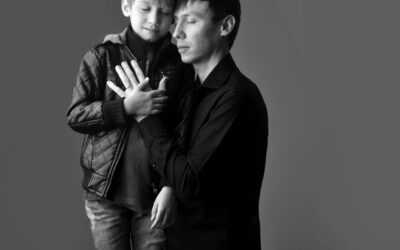Podcast: Play in new window | Download (Duration: 38:08 — 26.3MB)
Subscribe: Apple Podcasts | Spotify | Amazon Music
Attachment Parenting Vs. Attachment Science – Clearing up Misconceptions
Finding the middle ground between constantly attending to your child versus letting them learn to self-soothe is a challenge that all parents must face. In this episode, Therapist Uncensored hosts, Dr. Ann Kelley and Sue Marriott LCSW, CGP, break down the difference between “Attachment Parenting” and the science of actual Attachment theory. They share key elements from research outcomes that surround many common misconceptions of applying the theory itself.
You’ll learn that the ideals setup by Dr. William and Martha Sears and Richard Ferber might not fully translate in today’s world of parenting and that the way you respond to your child’s needs is a determining factor in how secure they will be later in life.
0:00-10:00
Introduction
Attachment Parenting is mostly associated with Sears & Sears
Modern research shows that providing children love, kindness and responsiveness results in a more well adjusted person
Attachment Theory: how a child learns that their primary caregiver can safely respond to them when they’re distressed
Attachment parenting by Sears and Sears asserts the importance of the three B’s: Breastfeeding, Baby Wearing, and Baby Sleeping
Attachment is a two-way process between parent and child
10:00-20:00
The three essentials for developing secure functioning
Children use their caregiver to regulate their body until they can do it on their own
Filling children up for exploration and being available for refueling rather than keeping children attached to you continuously
Responsiveness doesn’t have to be so strict and can be attuned to your family’s needs
Attunement builds secure attachment
Children are resilient and will bounce back so don’t feel you have to follow all the rules, make it work for the parent-child dyad. Focus on attunement rather than strict adherence to a technique.
20:00-30:00
Babies sleeping through the night is not necessarily a sign of secure attachment
Sleep training and Ferberizing is not necessarily allowing babies to “cry it out” but is a way of training them to sleep on their own.
Research indicates that babies should not be sleep trained prior to 6 months of age
Learning what your child’s cries mean helps you become attuned to them
Putting children to bed prior to falling asleep allows them to learn to sleep on their own
30:00-40:00
Studies have shown that parent and child’s cortisol levels are both elevated at the start of sleep training but, over time the caregiver’s goes down as the child expresses less distress yet the babies often stay elevated.
No shame parenting allows parents to respond to their children in a way that helps them grow
Children need to learn to get distressed and cry and to be soothed be loving caregivers
“Prepare the child for the path and not the path for the child”
Wrap up and outro
Resources
The Attachment Parenting Book : A Commonsense Guide to Understanding and Nurturing Your Baby by William Sears and Martha Sears
Solve Your Child’s Sleep Problems by Richard Ferber
Maternal Care, Gene Expression, and the Transmission of Individual Differences in Stress Reactivity across Generations by Meaney (20010)
The Ferber method: What is it, and how does it affect babies? by Dewar (2017)
Reducing bedtime tantrums: comparison between positive routines and graduated extinction by Adams and Rickert (1989)













